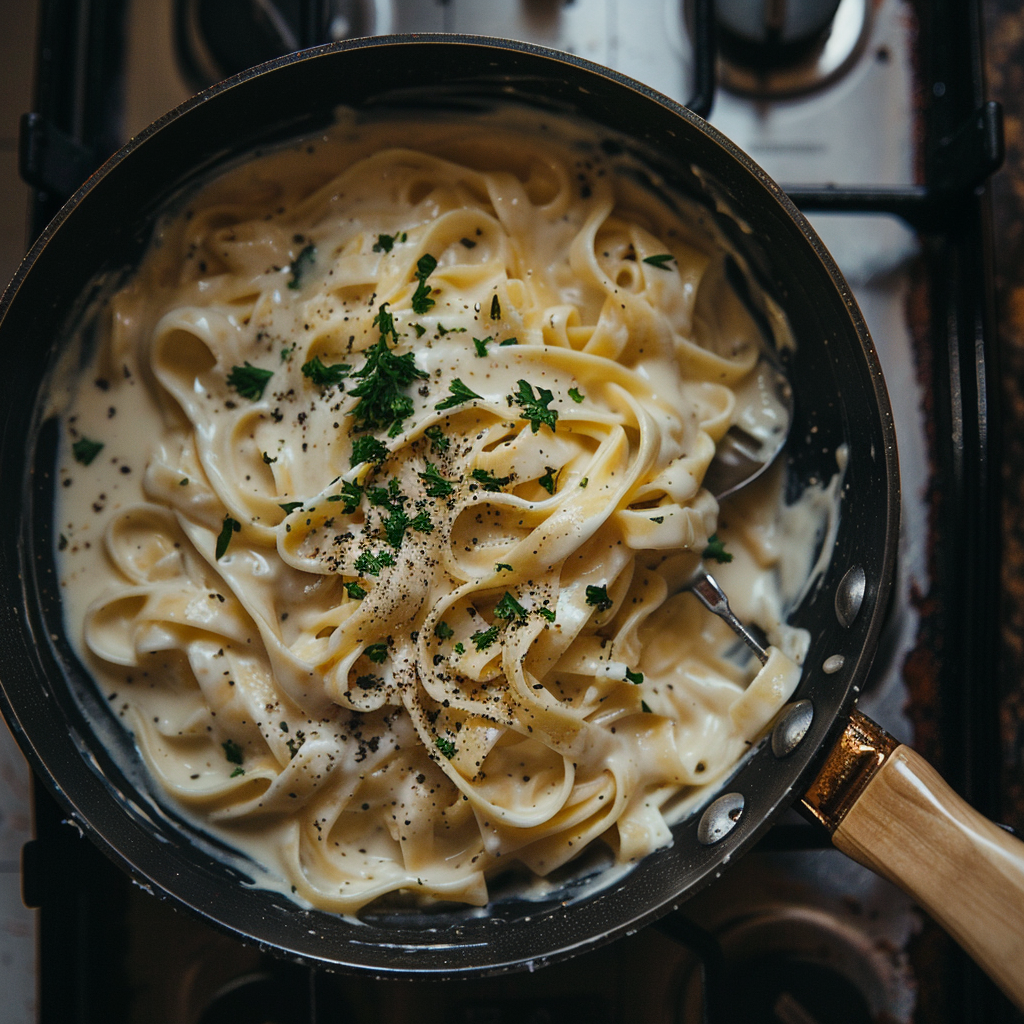You can categorize Italian sauces broadly by their primary components:
- tomatoes
- creams
- oils
- vegetables
Tomato-based sauces, like the world-famous marinara, are staples in Southern Italy and often feature herbs like basil and oregano.
In the North, cream and butter-based sauces are more prevalent, offering a different, richer flavor profile.
Below is a table highlighting some of the most beloved Italian sauces, their bases, and common uses:
| Sauce Name | Base Ingredient | Common Use |
|---|---|---|
| Marinara | Tomato | Pasta, pizza, seafood, dipping |
| Alfredo | Cream | Fettuccine, chicken, vegetables |
| Pesto Genovese | Olive oil, basil | Pasta, bruschetta, marinades |
| Carbonara | Eggs, cheese | Spaghetti, rigatoni |
| Puttanesca | Tomato, anchovies | Pasta, especially spaghetti and penne |
| Bolognese | Meat, tomato | Tagliatelle, lasagna, other pastas |
| Arrabbiata | Tomato, chili | Penne, as a spicy sauce for pastas |
These sauces are often easy to prepare and require basic ingredients found in most kitchens.
However, their simplicity belies the depth of flavor they bring to dishes, proving that great taste doesn’t always need complexity.
Whether it’s adding a dollop of pesto to a soup or tossing spaghetti in a rich carbonara, these sauces are sure to elevate any meal.
Tomato-Based Sauces
Italian cuisine is renowned for its variety of tomato-based sauces, each with its unique ingredients and cooking methods. Among these, Marinara and Bolognese sauces stand out for their rich flavors and versatility in pairing with different pasta dishes.

Marinara Sauce
Marinara sauce is a staple in Italian cooking, known for its simplicity and fresh taste. It’s made with tomatoes, garlic, onions, and herbs like basil and oregano.
This sauce typically cooks in a short amount of time, letting the flavors of fresh tomatoes take center stage. The classic Marinara is not just a favorite for pasta but also a common dipping sauce.
Bolognese Sauce
Bolognese, on the other hand, is a meat-based sauce originating from Bologna. It involves a long, slow cooking process that develops deep flavors.
Key ingredients include ground meat, typically beef, and sometimes pork, combined with tomatoes, onions, carrots, celery, and a splash of wine.
Enhancements such as a bit of milk or cream may be added to achieve a rich, hearty texture. In Italy, Bolognese is often referred to as ragù and is a comfort food beloved for its hearty and warming qualities, as explained in the insights from Eating Around Italy.
Cream-Based Sauces
Cream-based sauces are a cornerstone of Italian cuisine, offering a rich and luxurious addition to any pasta dish. They typically feature heavy cream, butter, and cheese, creating a smooth and indulgent experience.
Alfredo Sauce
The traditional Alfredo sauce is applauded for its simplicity and richness. It hinges on the combination of butter, heavy cream, and freshly grated Parmesan cheese, merging into a velvety coating ideal for fettuccine.

Carbonara Sauce
In contrast to popular belief, authentic Carbonara sauce avoids cream entirely, relying instead on eggs, Pecorino Romano cheese, pancetta, and black pepper.
However, some modern variations have introduced cream to achieve a creamier texture, which can be found in restaurants and kitchens globally.
Pesto Sauces
Pesto is an iconic Italian sauce known for its vibrant color and rich flavor. Commonly used to dress pasta, its versatility extends to use as a spread or garnish, bringing a taste of Italy to any dish.
Basil Pesto
Basil Pesto, or Pesto alla Genovese, is the quintessential pesto originating from Genoa.
Its fresh ingredients include basil, garlic, pine nuts, Parmigiano-Reggiano or Pecorino cheese, and extra-virgin olive oil.
The ingredients are traditionally blended to create a smooth, emerald-green sauce that encapsulates the essence of Italian cuisine. It’s a testament to simple, yet boldly flavored dishes that Italy is renowned for.
Sicilian Pesto
Moving south, Sicilian Pesto, though similar in concept, introduces ingredients like tomatoes and almonds for a unique twist.
This sauce reflects the island’s diverse culinary influences and caters to a palate seeking something a little different from the Ligurian classic.
The addition of these regional elements creates a richer and slightly chunkier sauce, striking a delightful balance between the basil and the sun-soaked flavors of Sicily.
Oil and Garlic Based Sauces
In Italian cuisine, oil and garlic-based sauces are revered for their simplicity and robust flavors. These sauces typically require few ingredients and are known for their versatility in complementing a variety of pasta dishes.
Aglio e Olio
“Aglio e Olio,” translating to garlic and oil, is the essence of simplicity.
The sauce combines finely sliced or minced garlic sautéed gently in extra virgin olive oil, sometimes with a bit of red chili flakes for heat.
Once the garlic is golden, it’s tossed with pasta, usually spaghetti, along with some of the pasta’s cooking water to create a lightly emulsified, glossy coating.
For a classic touch, a sprinkle of freshly-chopped parsley adds color and a fresh flavor dynamic.
Its preparation is quick, making it perfect for a late-night craving or a busy weeknight dinner. The key to perfection lies in not overcooking the garlic; it should be just golden and fragrant.
Salsa alla Crudaiola
“Salsa alla Crudaiola” is a no-cook sauce that celebrates the freshness of its ingredients. It typically includes ripe tomatoes, raw garlic, basil, and extra virgin olive oil.
These ingredients are combined uncooked, which allows for the vibrant flavors of the tomatoes and the aroma of the garlic to shine through.
The sauce is typically tossed with pasta that’s been cooked to al dente.
Since it’s served at room temperature or slightly chilled, it’s especially popular in the warmer months when fresh tomatoes are at their peak.
It may also be enriched with other elements like ricotta salata or fresh mozzarella for a richer, more decadent experience.

